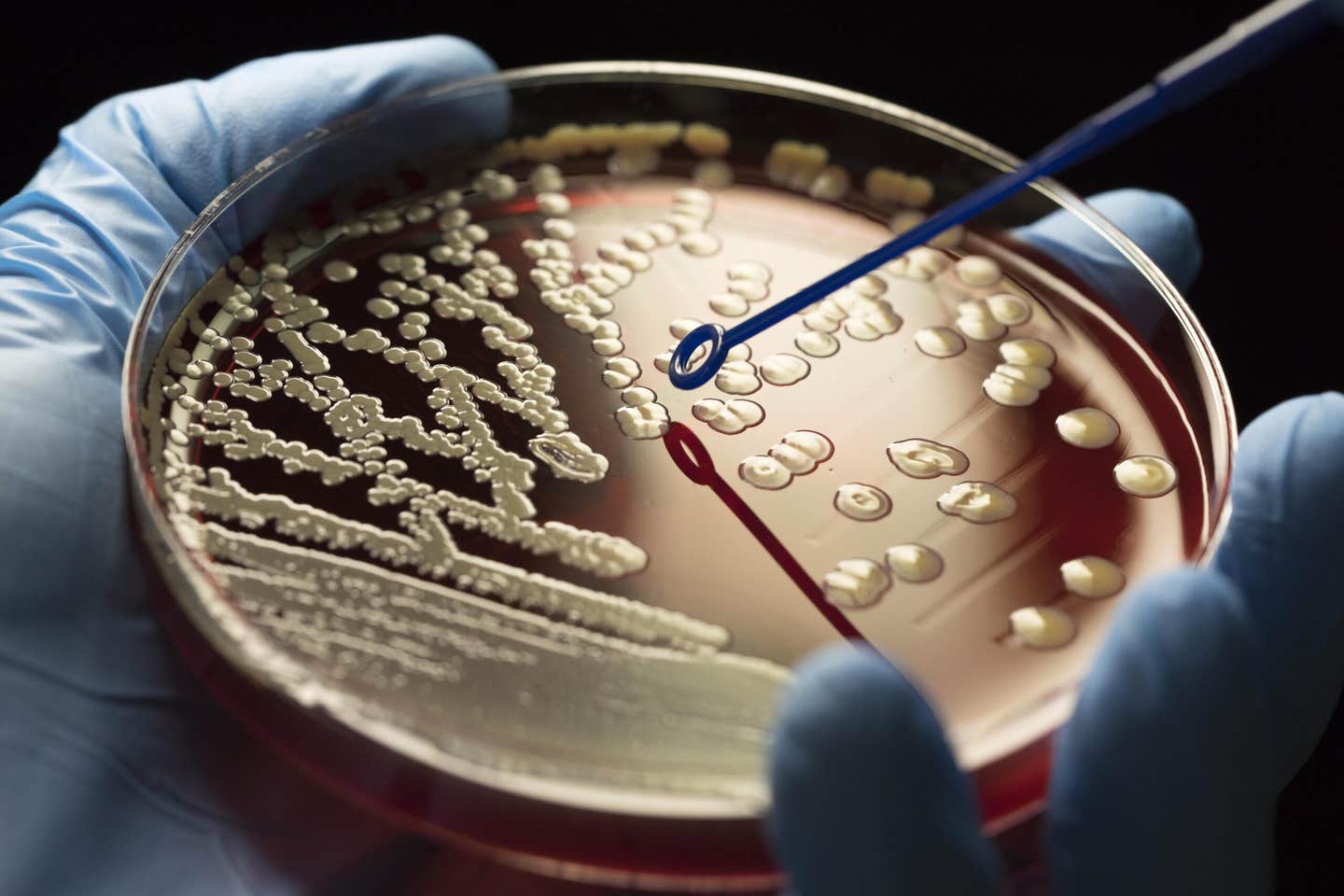Gold-based antibiotics could be the ‘silver-bullet’ against superbugs
The rise of antibiotic-resistant infections poses a significant threat to public health, killing an estimated 700,000 people globally yearly

[Apr. 10, 2023: JD Shavit, The Brighter Side of News]
Gold has known antibacterial properties, which make gold metalloantibiotics compounds with a gold ion at their core, an exciting new approach to developing antibiotics. (CREDIT: Creative Commons)
New research presented at the European Congress of Clinical Microbiology & Infectious Diseases (ECCMID), revealed the potential of several gold-based compounds to treat multidrug-resistant “superbugs”.
Researchers from the Barcelona Institute for Global Health in Spain found that all 19 gold complexes tested were effective against at least one hard-to-treat bacterium, and some were effective against several, making them potential new antibiotics.
The rise of antibiotic-resistant infections poses a significant threat to public health, killing an estimated 700,000 people globally each year. If no action is taken, the figure is projected to rise to 10 million by 2050, according to the World Health Organization (WHO). Despite the urgent need for new antibiotics, the development of such drugs has slowed down, and the few new antibiotics that are developed are mainly derivatives of existing treatments.
Gold has known antibacterial properties, which make gold metalloantibiotics compounds with a gold ion at their core, an exciting new approach to developing antibiotics.
Related Stories
The research team, led by Dr. Sara M. Soto González, studied the activity of 19 gold complexes against a range of multidrug-resistant bacteria isolated from patients, including Methicillin-resistant Staphylococcus aureus (MRSA), Staphylococcus epidermidis, Pseudomonas aeruginosa, Stenotrophomonas maltophilia, Acinetobacter baumannii, and Escherichia coli.
All of the bacteria strains studied were multidrug-resistant, with four of them on the WHO's list of antibiotic-resistant ‘priority pathogens’, posing a high risk to human health.
In tests, 16 of the 19 (84%) gold complexes were highly effective against MRSA and S. epidermidis, and 16 complexes were effective against other gram-negative bacteria, which have greater inbuilt resistance to antibiotics, making the need for new treatments more pressing.
Gold complexes use a variety of techniques to kill bacteria, including stopping enzymes from working, disrupting the function of the bacterial membrane, and damaging DNA. The multimodal mechanism used should prevent antimicrobial resistance from developing, which is an added advantage.
Dr. Soto González believes that the type of gold complexes studied, known as gold (III) complexes, are relatively straightforward and inexpensive to make. They can also be easily modified, providing a vast amount of scope for drug development. "With research on other types of gold metalloantibiotics also providing promising results, the future is bright for gold-based antibiotics," she concluded.
The potential of gold-based antibiotics has generated considerable interest from the medical community, policymakers, and the public. Antibiotic resistance is a pressing global health challenge, and the development of new antibiotics is critical to saving lives and preventing the spread of infectious diseases.
According to Dr. Soto González, the discovery of gold-based antibiotics offers a ray of hope in the battle against drug-resistant infections. The compounds have proven effective against hard-to-treat bacteria, including the two leading causes of hospital-acquired infections, MRSA, and multidrug-resistant A. baumannii. Moreover, the compounds are easy and inexpensive to make, making them a viable option for mass production.
The potential of gold-based antibiotics to revolutionize the fight against drug-resistant infections cannot be overstated. The development of new antibiotics is crucial to the future of public health, and gold-based antibiotics could be the breakthrough we need to curb the spread of infectious diseases and save lives. The next step will be to conduct clinical trials to determine the safety and efficacy of the gold-based compounds in humans.
Functionalized gold nanoparticles (AuNPs) to combat multi-drug-resistant pathogenic bacteria. (CREDIT: ACS Publications)
Until then, the potential of gold-based antibiotics offers a glimmer of hope in the fight against drug-resistant infections, a battle that has been ongoing for several decades. Antibiotic resistance occurs when bacteria evolve mechanisms that allow them to resist the effects of antibiotics, making it increasingly difficult to treat infections. This resistance is often driven by the overuse and misuse of antibiotics in humans and animals.
MRSA lives harmlessly on the skin of around one in 30 people, colonising areas such as the nose or armpits, and is usually spread by skin-to-skin contact.
However, it can lead to life-threatening infections if it enters hospital patients via wounds or feeding tubes, and spreads into their blood or organs.
WHO priority pathogens list for R&D of new antibiotics
Priority 1: CRITICAL
Acinetobacter baumannii, carbapenem-resistant
Pseudomonas aeruginosa, carbapenem-resistant
Enterobacteriaceae, carbapenem-resistant, ESBL-producing
Priority 2: HIGH
Enterococcus faecium, vancomycin-resistant
Staphylococcus aureus, methicillin-resistant, vancomycin-intermediate and resistant
Helicobacter pylori, clarithromycin-resistant
Campylobacter spp., fluoroquinolone-resistant
Salmonellae, fluoroquinolone-resistant
Neisseria gonorrhoeae, cephalosporin-resistant, fluoroquinolone-resistant
Priority 3: MEDIUM
Streptococcus pneumoniae, penicillin-non-susceptible
Haemophilus influenzae, ampicillin-resistant
Shigella spp., fluoroquinolone-resistant
For more science and technology stories check out our New Discoveries section at The Brighter Side of News.
Note: Materials provided above by The Brighter Side of News. Content may be edited for style and length.
Like these kind of feel good stories? Get the Brighter Side of News' newsletter.
Joseph Shavit
Head Science News Writer | Communicating Innovation & Discovery
Based in Los Angeles, Joseph Shavit is an accomplished science journalist, head science news writer and co-founder at The Brighter Side of News, where he translates cutting-edge discoveries into compelling stories for a broad audience. With a strong background spanning science, business, product management, media leadership, and entrepreneurship, Joseph brings a unique perspective to science communication. His expertise allows him to uncover the intersection of technological advancements and market potential, shedding light on how groundbreaking research evolves into transformative products and industries.



